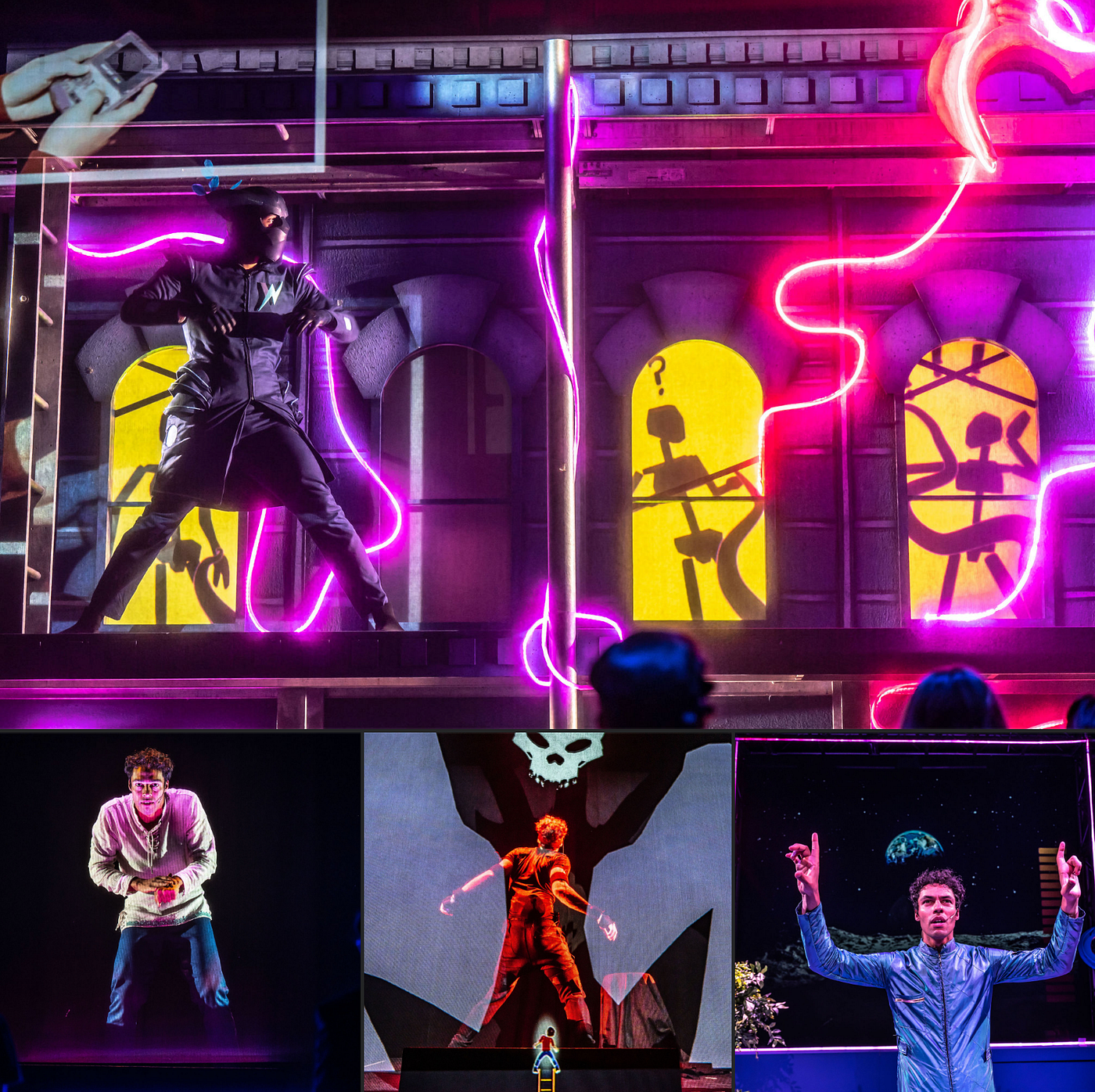The Immersive 5 with Anahita Dehbonehie of Outside The March
The performance designer and installation artist talks bucking traditional conventions and the benefits of trusting audiences


Originally hailing from Iran, Anahita Dehbonehie is currently based in Toronto where she’s a resident designer and core member of Outside The March. Her work in the immersive field for last decade has focused on communicating powerful truths through sensory and environmental elements. It’s these elements that align with Outside The March’s manifesto, which highlights the importance of utilizing new and unexpected spaces to engage with audiences who don’t normally attend the theater.
She is drawn specifically to work that questions form and content while creating space for contemporary conversation. While Anahita’s work has been featured across Canada and internationally, including at the Prague Quadrennial, The Vilnius Capital of Culture, and the Moscow Museum of Modern Art. She is also member of Dopolavoroteatrale.
With a unique focus and keen perspective on designing sensory elements in immersive experiences, we invited Dehbonehie to answer The Immersive 5.
The Immersive 5 series asks creators across the various immersive disciplines the same five questions in search of both their approach to crafting work, and the elusive nature of immersive work itself.
NO PROSCENUM: What does “immersive” mean to you, and what terms do you use when talking about your own work?
Anahita Dehbonehie: Words fluctuate I think and meanings go with them. I think right now “immersive” is code for an experience in which you physically enter a space and then maybe there’s nothing in that space but you and things to photograph for social media. For me immersion is its dictionary definition, I want the audience to forget about the outside they stepped away from when they came in. This is something we’ve tried to do with all of my favorite works at Outside the March - the company who I’ve worked most extensively with to create immersive experiences. The goal is to create a reality using all of the storytelling tools at our disposal: design, text, sound, physicality, sensory experience - to build a fulsome world that you can enter and ideally join.
NP: What should every creator be thinking about first and foremost when designing for the audience?
Get Patrick B. McLean’s stories in your inbox
Join Medium for free to get updates from this writer.
SubscribeSubscribe
AD: This is tricky because I don’t think you should design for the audience! Perhaps to my detriment, I’m always most excited about designing for the experience, and sometimes the experiment. The audience, especially in immersive work, are the fellow participants in the experience/experiment and without them the work is incomplete. This is the core of all live performance work for me, immersive or not . However this also means I put true faith in my audience — I want to challenge them, to surprise them, to play with them. I want them to experience both moments of alienation (where they step back and look at something truly new) and connection (where they feel themselves deeply reflected). I think this is the gift of immersive theatre — we don’t have to be symbolic or realistic, tragic or rom-com. New work can contain multitudes because the experience is ideally so sensorially encompassing — it literally surrounds us — that its very form opens the door to re-examine moments that would look quite quotidian in another medium. Ideally we are laying a level of hyper-experience over the real and inviting the audience to add their own third level of interpretation to the shared vision. I feel like good immersive theatre is what it feels like to attend your first concert as a kid or what it must have first felt like to experience motion pictures with live orchestras; at its best, it feels NEW and NOW. It is not a cool party, it needs to change your life.

NP: What did you wish you knew when you were starting out and what’s the one thing you’d tell a creator starting out today?
AD: When I was starting out, I used to think that there were good and bad ways to design things, that there were noble aesthetics and meager ones — that there were smart cultural references and ones that no one else would understand. What a waste of time all that was! The most valuable thing any artist can bring to any process is their unique viewpoint. There’s a shift towards this way of thinking in the industry at large, but this old idea of taste and capital “B” beauty still reigns in some places. And they’re such old, such limited ideas. For example, the idea that green light on stage will make everyone look sick — I feel like Moonlight unilaterally squashed that one — or that certain costumes need to be built in certain ways. I’m just not interested in these old ideas and I think a younger me thought she had to pretend to be interested in them. The theatre of today should actually reflect the world of today and in some ways prestige television is currently breaking these boundaries better than theatre or dance (which is a little wild) as live performance is best suited to push new frontiers. Because the truth is, even without the many millions of dollars of something like Netflix, we can still create an affect in our audiences that nothing else can replicate. We can create a magic that no other medium can replicate because performance is active and your active engagement with it changes it constantly. Especially in immersive theatre.
NP: Why do this kind of work and not craft something for a more traditional medium, be it a novel, play, film, or game?
AD: In No Save Points, the show I’m currently working on with Outside the March, we’re mixing mediums in a way that’s really exciting and that is wholly experimental. The tagline for the show is “A play you can play” and I really love that, because it’s a good line for sure, but it’s also what all theatre should be. All theatre should be a play you can play. In the case of No Save Points the meaning is literally the audience is engaging in video gameplay with a live protagonist in digital and physical worlds. However I mean it when I say all the theatre should be play. And I don't mean that experiences should be frivolous. Unfortunately, I think this Old idea that cultural experiences only have value if they’re very serious leads to some very dusty offerings. And leads to the red herring of ‘this is how we do this’ - which of course means that there are no New things found. Play is one of the fundamental things we engage with as human beings, whether we do it to learn, to connect with one another or to just experiment with something in our own understanding. Otherwise, we’re only ever recycling something that is a copy of a copy of someone else’s understanding and experience from a long time ago. Play is how we find the new.
NP: What inspirations — and anything is fair game here — are currently shaping your creative practice?
AD: My daughter, a new addition to my life, has the unforgiving schedule of most little babies and so has conditioned my mind and body to spring awake at five am, without fail. Even though she has now, traitorously, started to sleep in till seven - I still get up at or before dawn. I find this time the quietest of the day and the time when my own voice is most clear in my head. It has become the most inspiring time for me, and often friends and colleagues will receive early six am texts with ideas, questions, and musings from me that they’ll graciously tolerate and respond to. Because honestly the most inspiring thing about working in theatre is other people.
Discover the latest immersive events, festivals, workshops, and more at our new site EVERYTHING IMMERSIVE, new home of NoPro’s show listings.
NoPro is a labor of love made possible by our generous Patreon backers. Join them today!
In addition to the No Proscenium website, our podcast, and our newsletters, you can find NoPro on Facebook, LinkedIn,YouTube, Twitter, Instagram, in the Facebook community Everything Immersive, and on our Patreon Backer exclusive Discord.